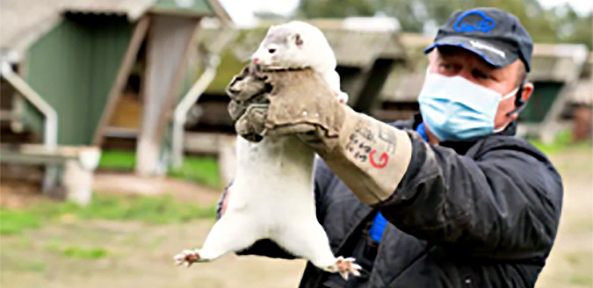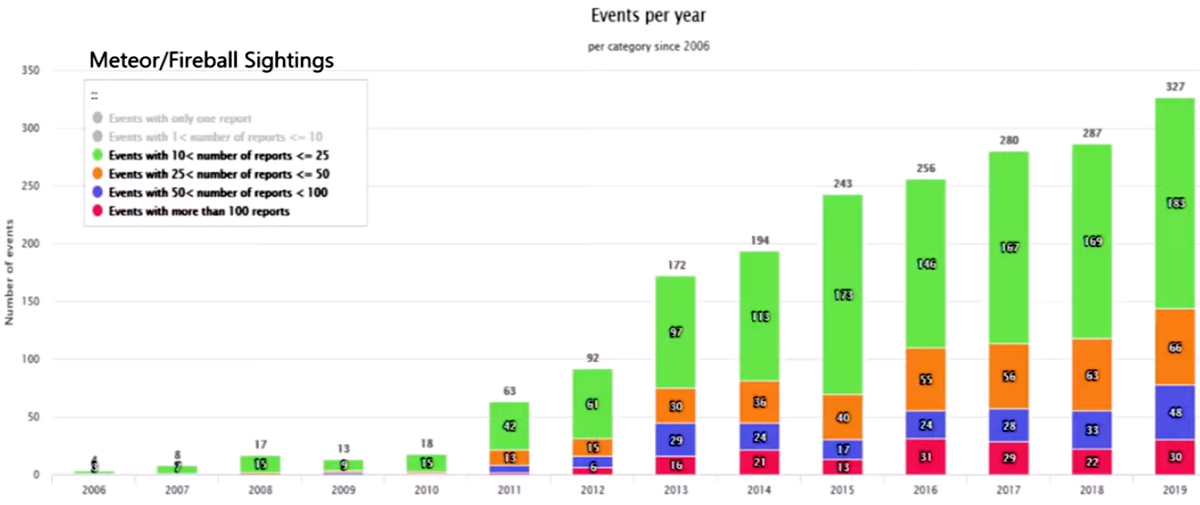




Resonance in Prophetic Information
The Ancient Meteorite-Borne Threat of Pneumonic Plague
by Alex Putney for www.Human-Resonance.org
November 1, 2020
Various high-level information sources have foretold of the coming of new and incurable diseases that will plague humanity during the period of global tribulation preceding Judgement Day of Biblical prophecy, also known as Purification Day or the Red Dawn among traditional Native American prophecies of the Hopi, Apache, Lakota and Maya cultures.
Information imparted by extraterrestrial teachers such as Billy Meier as well as channelled sources such as the Cassiopaeans have predicted an imminent global pandemic of pneumonic plague --resulting from a dramatic increase in cases of meteorite-borne bubonic plague now occurring in rapidly increasing numbers of cases worldwide:

"Minks show open mouth breathing, discharge from their eyes and nose... and typically die the next day."
Bubonic plague causes phlegm discharge and rapid death in small mammals (not COVID).
Flea-transmitted outbreaks recently caused human deaths from bubonic plague after contact with marmuts in China & Mongolia, and are now infecting minks in Spain, the Netherlands and in Utah, US.
An infected squirrel was recently reported in Colorado --and back in 2001, the death of an American cyclist near the Colorado Springs airport was linked to contact with an infected prairie dog that had also tested positive for the bubonic plague.
From 2010-2015, a total of 3248 cases and 584 plague deaths were reported worldwide, with 75% of deaths having occurred in Madagascar.

The sharp rise in meteoritic debris entering Earth's atmosphere results from the close pass of the invisible brown dwarf binary companion of our sun in --recently passing through periapsis in December, 2012-- sending a barrage of Oort comets hurling at our planet in ever increasing numbers (charted above).
The spike in meteorite activity has caused the concurrent spike in meteorite-borne bacterial infections causing bubonic plague in small, ground-dwelling mammals (including cats).
Recent medical research on transmission dynamics of the European Black Plague of 1347-1352 also implicates the meteorite-borne bacterial pathogen Yersinia pestis as the culprit, causing sudden swelling of the lymphatic system and bleeding of the organs. Infection can also spread through the blood, as septicemic plague.
In 5% of persons with bubonic plague, infection reaches the lungs as pneumonic plague, where the pathogen becomes transmitted person-to-person via aerosolized particles exhaled from the lung, causing sudden hemorrhagic fever, aching and bleeding of the internal organs, as well as red blotches from effusion of blood beneath the skin.
The pneumonic form of the plague is by far the most transmissible, and will claim many lives in all regions of the world in the coming months due to the ongoing spike in total volume of meteoritic debris entering our atmosphere to disseminate their toxic payloads at ground level.
For this significant reason, handling of small mammals of all kinds --both wild and domestic-- should be avoided or carefully monitored and controlled during the coming months, as the global rate of confirmed cases and fatalities due to the plague accelerate.
Practical safety measures include removal of rodents or small mammals that should not be kept as house pets during the prevailing meteoric conditions, which now pose a significant health risk to children as potential plague vectors.
Keeping house cats indoors is highly recommended, as well as careful, regular monitoring of all pets and family members for plague symptoms. Dogs show more resistance to infection by Y. pestis bacterium, but must also be closely monitored for signs of fever, lethargy, lymph swelling, lesions or cough.
The increasing prevalence of bubonic, septicemic and pneumonic plague cases have become obscured by media misdirection worldwide, resulting in regular misidentification of many cases of Y. pestis infection that are falsely diagnosed as COVID cases at a considerable profit -and to the detriment of public health.
The surprising antiquity of the pneumonic plague has been traced by geneticists back to a pair of key mutations that occurred in Eurasia around 6,000 years ago. Researchers concluded Y. pestis first evolved as a respiratory pathogen before taking on its more common bubonic form:
In a paper published in Nature Communications, Lathem and first author Daniel Zimbler, Ph.D., a Feinberg post-doctoral fellow, demonstrated how the acquisition of a single gene caused the shift of Y. pestis from causing a primarily gastrointestinal infection to a more serious and often fatal respiratory disease. They further showed how later modifications of this gene enhanced infections associated with the bubonic plague.
"Our findings demonstrate how Y. pestis had the ability to cause a severe respiratory disease very early in its evolution. This research helps us better understand how bacteria can adapt to new host environments to cause disease by acquiring small bits of DNA," Lathem said...
According to Lathem, the surprising conclusion from this aspect of the study is that, contrary to current thinking in the field, Y. pestis may have first evolved as a respiratory pathogen before it could cause the more common form of disease, bubonic plague.
Lathem said the new research may explain how Y. pestis transitioned from causing only localized outbreaks of plague to the pandemic spread of Y. pestis such as the sixth century's Justinian Plague and the fourteenth century's Black Death.
"Our data suggests that the insertion and then subsequent mutation of Pla allowed for new, rapidly evolving strains of disease," Lathem said.
Acquisition of a pair of genes played a crucial role in the 'gain of function' that enabled the aggressive virulence of Y. pestis:
Researchers analysed ancient genomes extracted from the teeth of 101 adults dating from the Bronze Age and found across the Eurasian landmass from Siberia to Poland.
They found Y. pestis bacteria in the DNA of seven of the adults, the oldest of whom died 5,783 years ago --the earliest evidence of plague. Previously, direct molecular evidence for Y. pestis had not been obtained from skeletal material older than 1,500 years.
However, six of the seven plague samples were missing two key genetic components found in most modern strains of plague: a "virulence gene" called Ymt, and a mutation in an "activator gene" called Pla.
The Ymt gene protects the bacteria from being destroyed by the toxins in flea guts, so that it multiplies, choking the flea's digestive tract. This causes the starving flea to frantically bite anything it can, and, in doing so, spread the plague.
The mutation in the Pla gene allows Y. pestis bacteria to spread across different tissues, turning the localised lung infection of pneumonic plague into one of the blood and lymph nodes.
Researchers concluded these early strains of plague could not have been carried by fleas without Ymt. Nor could they cause bubonic plague --which affects the lymphatic immune system, and inflicts the infamous swollen buboes of the Black Death --without the pla mutation.
Consequently, the plague that stalked populations for much of the Bronze Age must have been pneumonic, which directly affects the respiratory system and causes desperate, hacking coughing fits just before death. Breathing around infected people leads to inhalation of the bacteria, the crux of its human-to-human transmission.
Copyright 2020 Alexander Putney